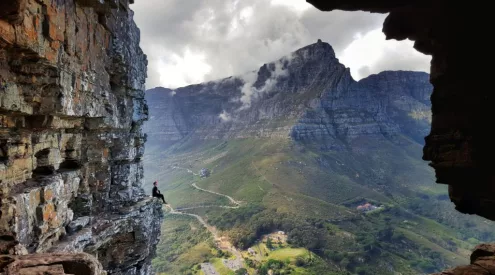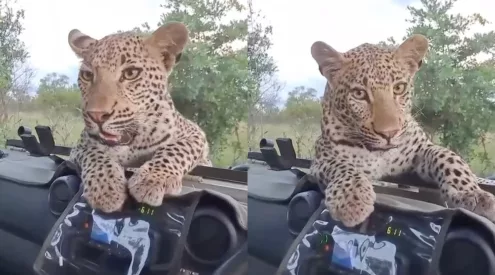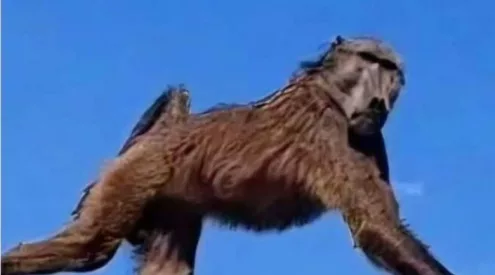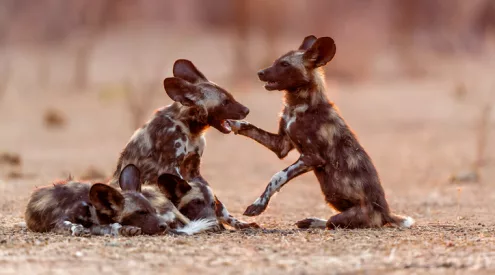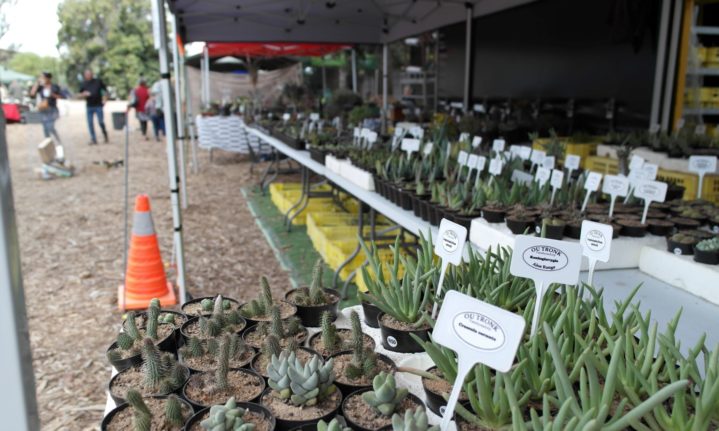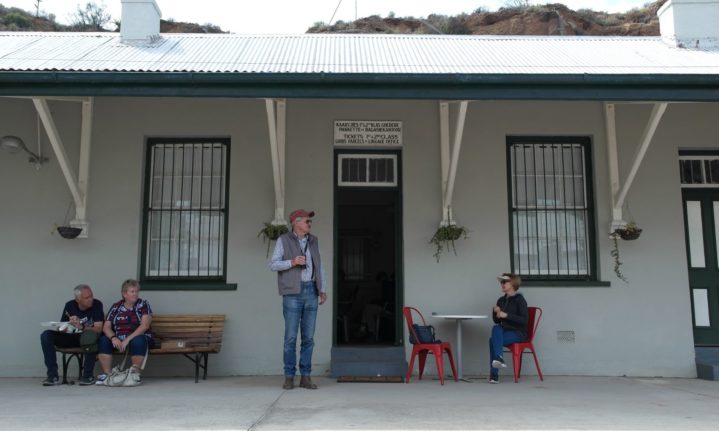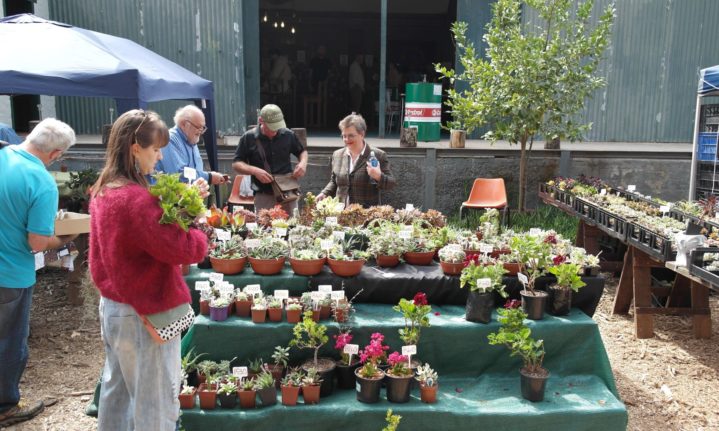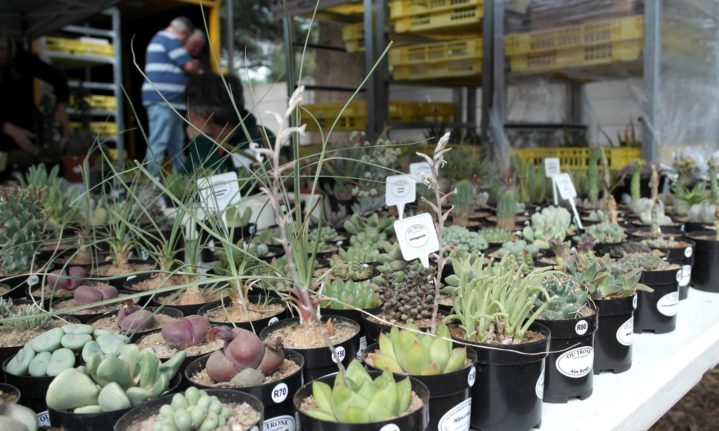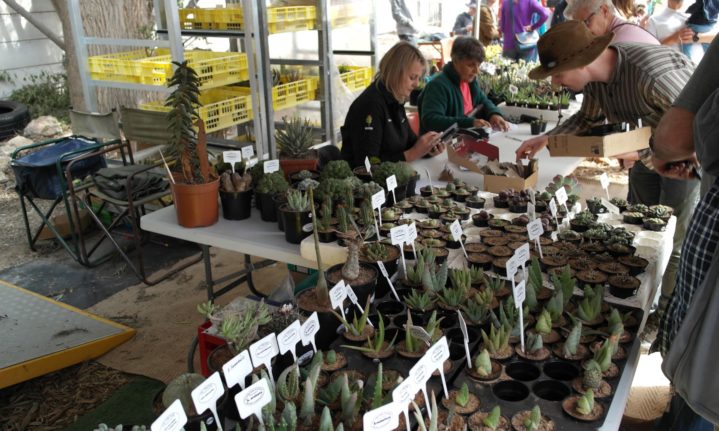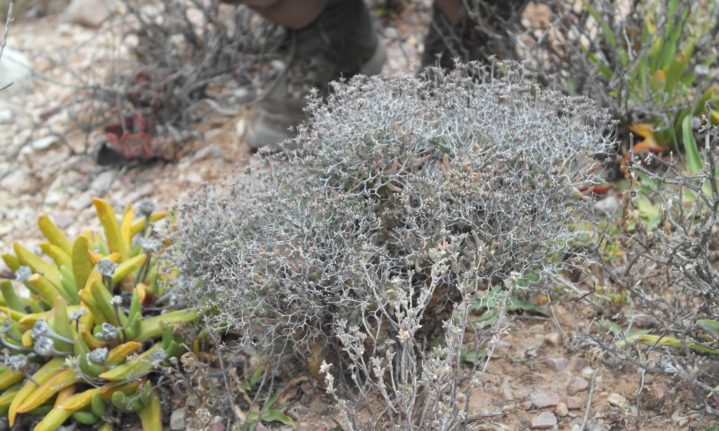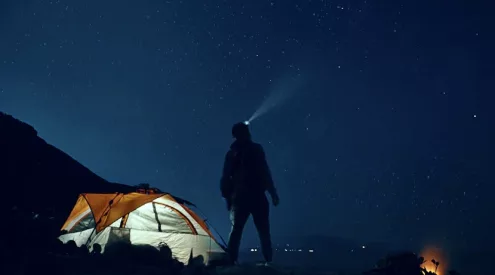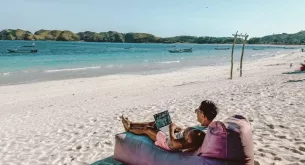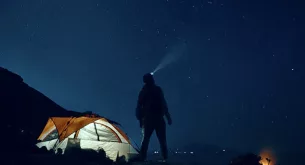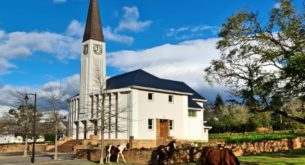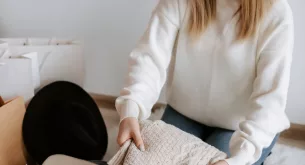If the mere mention of lithops or conophytums gets you on the edge of your seat, then the Calitzdorp Vetplantfees is the festival for you. If that doesn’t ring a bell then maybe the names perdetande, eendepoot and koeispene are more colloquially familiar. For those that are not too fussed about plants – don’t worry, they’ll grow on you.
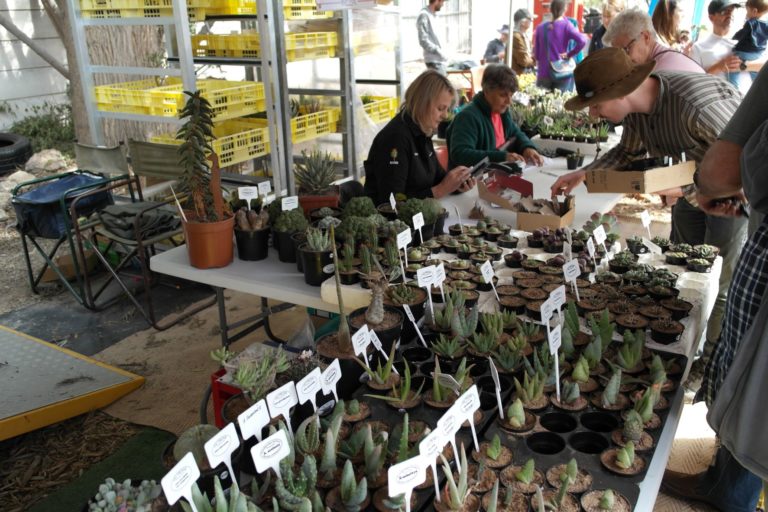
Southern Africa harbours up to 46% of the world’s succulent species, with the Klein Karoo home to more than 3 200 species (with new species discovered every year), and 400 species are endemic to the area – meaning they’re found nowhere else on earth.
South Africa’s succulent Karoo Biome is said to be home to the richest diversity of succulent plant species on earth, home to three biodiversity hotspots, namely fynbos, thicket and our interest, the succulent Karoo.
The area comprises 110 000 km2 stretching from Luderitz in the north, down to the Klein Karoo. The average rainfall of the region is between 100-200 mm, meaning the plants had to learn rather unique ways how to survive.
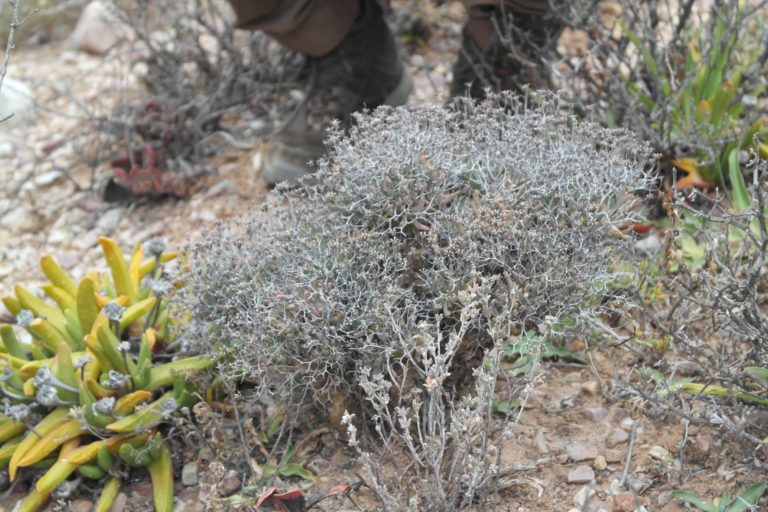
Tylecodon reticulatus or sifbos/ sterretjiebos has a unique adaption where the old flower heads at the tip of the branches mimic the movement of ants to deter predators – giving rise to the name sterretjiebos (star bush).
The Vetplantfees may be the plant enthusiasts’ heaven, but when you delve into this world, you’ll find that things get pretty interesting.
I arrived before 9 am at the old station in Calitzdorp, where nurseries had already set up the stands and I could hear the calls of ‘Aloe! Is it me you looking for?’
I had to postpone that call of the succulents because I had to jump into the back of a bakkie that was departing for the nearby Jakkalskop veld tour. This rocky outcrop is home to more than 100 plant species, a unique biodiversity hotspot within a unique biodiversity hotspot.
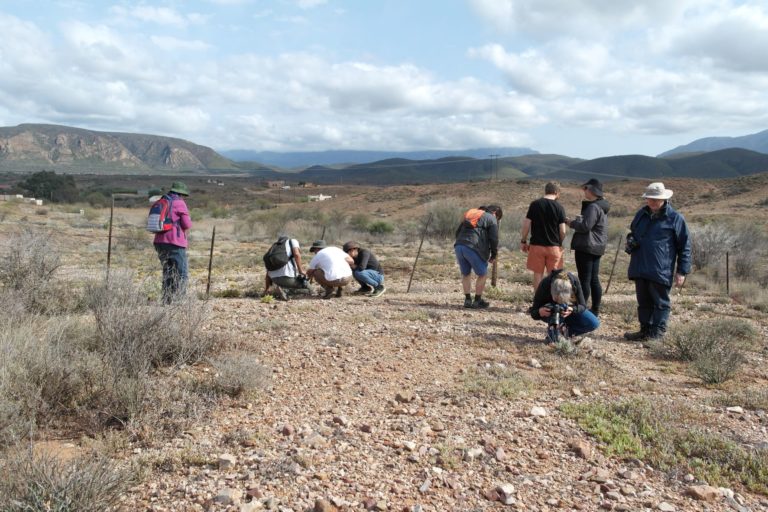
Pretty soon into the tour, the group’s curiosities got the better of them as they searched the veld for succulents.
Pretty much the moment we climbed off the back of the bakkie, the first interesting specimen was already before us – perde tande or horse teeth. It also goes by the name truncata to appease some botanists.
It didn’t take long for the group of avid plant enthusiasts to get excited about the surrounding flora, and barely 10 metres down the trail, the “plant-people” went wild, looking below this bush and pointing at that shrub.
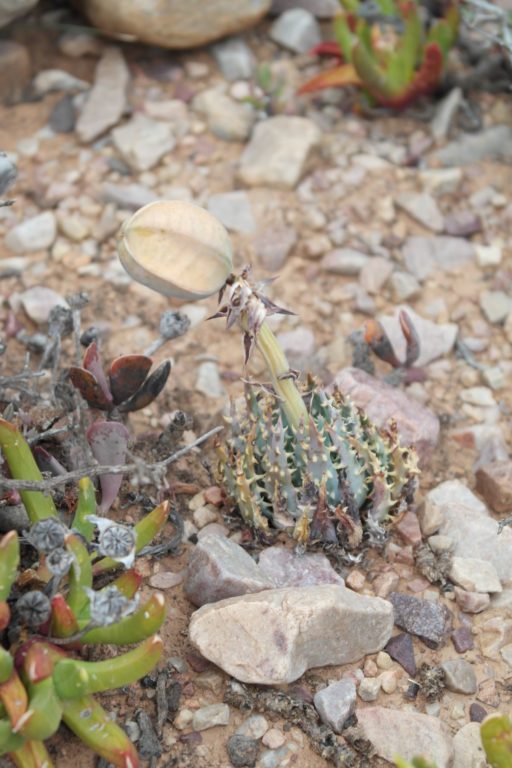
Aloe Longistyla is one of the smallest aloes with the biggest flowers in relation to the plant. They are very difficult to grow like this in cultivation, where they develop a single seed large seed pod that will eventually burst open.
Back at the station, it was as if Calitzdorp became a major junction town overnight. The old ticket offices were playing host to workshops, such as Propagation 101 and Landscape Design with Succulents by Yvonne Hemmenway.
Yvonne is a University of California Master Gardener who ran a cactus nursery with her husband Buck, in California. A trip to South Africa to learn more about the plants resulted in them moving to Calitzdorp and founding the Vetplantfees.
In the hall across from the ticket office, Ernst van Jaarsveld was giving a talk to a full-capacity crowd on Welwitschias. Ernst was the curator of succulents at Kirstenbosch Botanical Gardens for 40 years, and is the current plant specialist at Babylonstoren – where he has landscaped a welwitschia garden.

Welwitschia grows in the arid regions of Namibia. Dr Ernst van Jaarsveld gave a presentation on the newly landscaped Welwitschia garden in Babylonstoren. Picture: Flickr Commons/ Nigel Hoult.
But it’s not all dandy when it comes to the world of succulents, unfortunately. The guest speaker at the banquet dinner was Captain Karel du Toit of SAPS Namakwa Stock Theft and Endangered Species Unit.
Read: The dark side behind the growing popularity of succulents
He is the top cop when it comes to catching succulent poachers, detailing the extent of the supply chain of poached succulents, which not only go as far as China but are sold online in the EU as well.
But all in all, the Vetplantfees is likely the coolest festival around. It may be prickly, but there are no pricks. There are only sincere attendees who are genuinely passionate and eager to share their knowledge. There was even a pot dealer and a workshop on growing potted succulents. I went home with some Conophytums, which I was told to resist giving water too regularly. Instead, I’m whispering ‘you grow girl!’
Vetplantfees 2023: 15-23 September
For more information visit the Vetplantfees website here.
ALSO READ: Why South Luangwa National Park needs to be on your travel list

